Ready to meet India’s startup giants? The country’s unicorn club just keeps getting bigger and more impressive.
India’s startup ecosystem has hit remarkable milestones – from welcoming its 100th unicorn in 2022 to now housing 118 billion-dollar companies. These powerhouse startups command a staggering combined valuation of $354 billion, cementing India’s position as the world’s fastest-growing startup hub.
The numbers tell an incredible story of growth and innovation. Since 2016, Indian unicorns have pulled in over $100 billion in funding while creating 450,000+ jobs across the country. From Flipkart’s towering $37.6 billion valuation to PhonePe’s impressive $12 billion worth, these success stories span technology, e-commerce, fintech, and healthtech sectors.
Want to discover which Biggest Unicorn Companies in India are leading the charge in 2025? Let’s dive into the 15 biggest startups reshaping India’s digital landscape.
Table of Contents
15 Biggest Unicorn Companies in India (2025 Rankings)
Flipkart: The $37.6 Billion E-commerce Leader
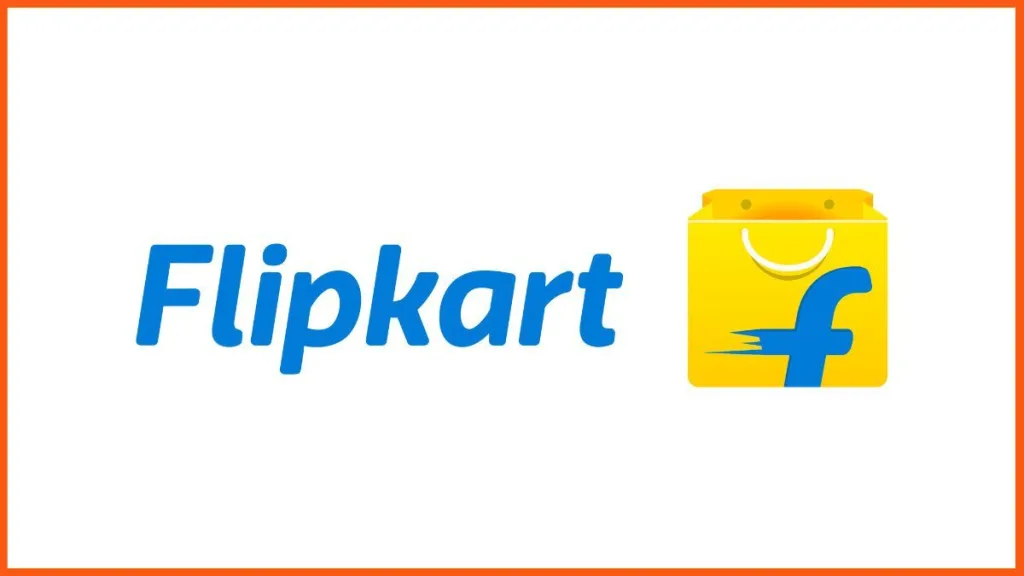
Flipkart’s journey from a modest online bookstore to India’s e-commerce crown jewel showcases the power of homegrown innovation. Today, this Bengaluru-based giant commands a staggering $37.6 billion valuation, alongside an impressive 48% share of India’s e-commerce market.
Walmart Acquisition Impact
The retail world watched closely as Walmart made its biggest bet on Indian e-commerce. The American retail giant snapped up a 77% stake in Flipkart for ₹1350.09 billion in 2018 – marking not just Walmart’s largest-ever acquisition but a defining moment in global e-commerce. Fast forward to today, Walmart’s stake stands at 81%, backed by additional investments exceeding ₹168.76 billion.
Here’s what’s next for Flipkart: The e-commerce leader eyes a landmark IPO by late 2025 or early 2026. Already, the company has secured crucial internal approvals to shift its base from Singapore to India – a strategic move paving the way for this public listing.
Technology Infrastructure and Innovation
Behind Flipkart’s seamless shopping experience lies a robust technological foundation. The company’s tech arsenal includes cutting-edge solutions like Nginx, Kafka, Dropwizard, HDFS, and Hive. Picture this: thousands of bare-metal servers spread across multiple regions, working in perfect harmony.
Flipkart’s tech evolution tells an impressive story. The shift from direct-attached storage to composable infrastructure has supercharged resource utilization and data availability. Plus, their sophisticated Clos network fabric with merchant silicon ensures smooth operations through automated provisioning.
Competitive Strategy in Indian Market
Want to know how Flipkart stays ahead? The numbers speak volumes. Mobile phones make up 50% of their product mix, while apparel contributes another 30%. The company’s dominance shines through with 48% market share in online smartphones and a commanding 60% in online fashion.
The Flipkart Group – including Myntra and Shopsy – continues outpacing industry growth. Never one to rest on its laurels, Flipkart keeps expanding its playbook. From payments to advertising and lightning-fast deliveries, the company keeps innovating. Their latest move? Super.money, a UPI payments app that opens yet another revenue stream.
PhonePe: India’s $12 Billion Digital Payments Unicorn
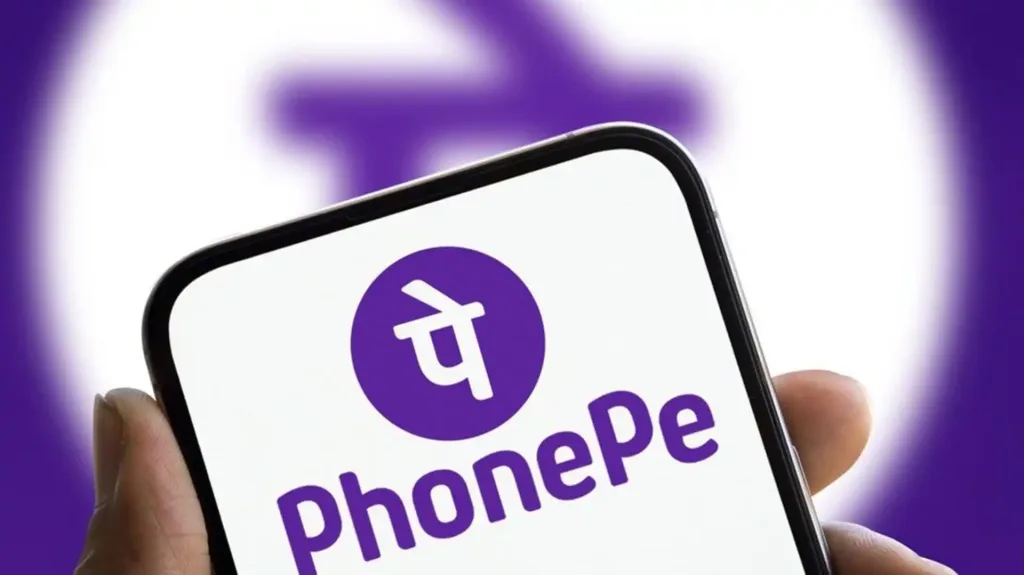
PhonePe stands tall as India’s digital payments powerhouse, commanding a mighty $12 billion valuation. Since 2016, this Bengaluru-based giant has redefined how millions of Indians handle money – from quick transfers to bill payments and beyond.
UPI Transaction Volume and Growth
Ready to hear some jaw-dropping numbers? PhonePe rules the UPI landscape with 47.67% market share by transaction volume and 50.74% by transaction value. January 2025 saw the platform process a whopping 810.2 crore transactions, smashing records with over one billion transactions across UPI, cards, and wallets for three straight months. Picture this: 330 million daily transactions flowing through PhonePe, adding up to an incredible $1.5+ trillion in annual payment value.
The secret sauce? PhonePe’s laser focus on tier 4, 5, and 6 towns. Their merchant network now spans 40 million vendors nationwide, powered by 50 lakh payment devices. Here’s something cool – merchants hear payment amounts announced in 11 local languages, no screen-checking needed.
Revenue Diversification Beyond Payments
While payment services drive 90% of PhonePe’s revenue, the company’s growth story keeps getting better. FY23-24 brought in ₹5,064 crore, marking a stellar 74% year-on-year jump. Even better? The standalone payments business turned the corner with ₹710 crore in Adjusted Profit After Tax.
But that’s not all. PhonePe’s expanding its horizons fast. Their insurance arm? Already 9 million policies sold since 2021. Monthly merchant loans? A cool ₹300 crore. Plus, they’re shaking things up with Pincode for e-commerce, Share.Market for stock trading, and India’s very own Indus Appstore.
Regulatory Navigation in Fintech
Want to know how PhonePe stays ahead of the regulatory curve? They secured online payment aggregator approval back in 2021, opening doors to B2B payment solutions. Their international playbook? Perfectly aligned with RBI’s cross-border framework.
As UPI goes global across seven countries – from France to Nepal – PhonePe stands ready to capture new markets. Their strict compliance focus, especially in digital lending, has become a genuine competitive edge in India’s evolving fintech landscape.
Polygon: The $10 Billion Blockchain Infrastructure Giant

Meet Polygon – India’s blockchain powerhouse now worth $10 billion. Since 2017, this Ethereum scaling solution has caught the attention of global investment giants like Sequoia Capital India, SoftBank Vision Fund 2, and Galaxy Digital.
Ethereum Scaling Solutions
Here’s what makes Polygon special: While Ethereum struggles with high costs and network jams, Polygon swoops in with elegant solutions. Their star player? Polygon zkEVM – a zero-knowledge scaling solution that plays perfectly with existing smart contracts. Want to know the real game-changer? Transactions cost just ₹1.27 on average. Plus, their Layer 2 technology handles thousands of transactions per second, leaving Ethereum’s 15-transaction limit in the dust.
Web3 Developer Ecosystem
The numbers tell an incredible story. Picture this: 53,000+ decentralized applications, with 17,800 projects buzzing with monthly activity. Developers have pushed more than 2 billion transactions across 10,000+ dApps. From Uniswap’s trading floors to Atari’s gaming worlds and OpenSea’s NFT galleries – Polygon powers them all. Plus, their Polygon Guilds bring developers together in cities worldwide.
Partnerships and Enterprise Adoption
Big names? Polygon’s got plenty. EY picked Polygon’s proof-of-stake blockchain for their enterprise contracts, drawn by its speed and cost savings. Nike’s Swoosh NFT platform, Starbucks’ Odyssey program, Disney’s NFT venture – they’re all building on Polygon. These aren’t just partnerships – they’re bridges bringing blockchain to everyday business.
Crypto Market Volatility Impact
Ready for some insider perspective? Polygon co-founder Sandeep Nailwal sees a permanent shift in crypto markets. Those scary 90% drops? They’re history, replaced by milder 30-40% swings. Thank U.S. policies, Bitcoin ETFs, and evolving market dynamics. Meanwhile, Polygon keeps pushing forward, betting big on zero-knowledge tech to bring the next billion users into Web3.
Dream11: Fantasy Sports Platform Valued at $8 Billion

Dream11’s rise to an $8 billion fantasy sports giant reads like a blockbuster success story. This Mumbai-based platform started small but dreamed big – jumping from 2 million users in 2016 to a massive 100+ million registered users. Today, Dream11 rules India’s fantasy sports world with over 90% market share.
User Acquisition Strategy
Smart moves win games – Dream11 proves it with their user strategy playbook. Their secret weapon? Understanding exactly how players tick through detailed cohort analysis. Players who jump into one match? They’re likely coming back for more. Those afternoon campaign slots? Pure gold for engagement.
Money talks – Dream11 knows it. Their marketing spend shot up 37% to ₹6,191 crores in FY’23. TV screens, digital channels – they’re everywhere sports fans look.
Sports Partnerships and Sponsorships
Dream11 plays the partnership game like a pro. Scoring the exclusive Official Fantasy Game Partner deal with ICC through 2023 wasn’t just another win – it opened doors to grow fantasy cricket from 4.5 crores to 10+ crore players globally.
But why stop at cricket? Dream11’s partnership trophy case includes Pro Kabaddi League, Hero Indian Super League, NBA, and a fresh three-year deal with International League T20 (ILT20). Remember 2020? They grabbed IPL’s title sponsorship for ₹222 crore, turning heads across the sports world.
Legal Framework Navigation
Every champion faces hurdles – Dream11 cleared theirs with style. When gambling laws threatened to complicate things, the Punjab and Haryana High Court stepped in, declaring fantasy sports a “game of skill”. The Supreme Court backed this up, highlighting how winning depends on “knowledge, attention, and execution”.
August 2021 brought the big win – fantasy sports got the legal green light. Sure, some states like Assam, Telangana, and Andhra Pradesh still have restrictions, but Dream11 keeps playing the long game.
RazorPay: The $7.5 Billion Payment Gateway Powerhouse

Here’s a fintech powerhouse that’s changing how India does business. Razorpay, valued at $7.5 billion, has come a long way since its 2014 launch as a payment gateway provider. This Bengaluru-based innovator now handles a massive ₹5062.83 billion in annual payments, with projections hitting ₹7594.24 billion by 2025.
SMB-Focused Growth Strategy
Small businesses fuel India’s economy – Razorpay gets it. Their numbers tell the story: 700,000 SMBs, startups, and freelancers joined the platform in just 12 months. Here’s something interesting – 54% of their digital transactions come from tier 2 and 3 cities. The goal? Bringing 5 million more SMBs into the digital payments world through clever solutions like MultiQR, Stores, Payment Handle, and Tap-on-Glass.
Product Diversification Beyond Payments
“Merchants don’t think of payments in isolation,” says Rahul Kothari, Razorpay’s CBO. Smart thinking – that’s why Razorpay now offers a full suite of business tools. Payment gateway? Check. Neo-banking through RazorpayX? You bet. Plus lending via Razorpay Capital and streamlined payroll solutions.
The strategy’s paying off big time. Neo-banking and lending already bring in 30% of revenue, just two years in. Monthly lending? A cool ₹600-800 crore. But why stop at India? Razorpay’s already conquering Malaysia and eyeing Indonesia, Vietnam, and the Philippines.
AI and ML Implementation in Fintech
Want to see tech magic in action? Meet ‘Razorpay Recon’ – their AI wizard that supercharges financial operations by 80%. This powerhouse handles 200 million monthly transaction reconciliations. Plus, their clever Dynamic Router plays traffic cop for payments, boosting success rates by 10%.
The Smart Router’s AI brain picks the best payment providers automatically, cutting costs by 5%. Now that’s putting technology to work.
Ola Cabs: Ride-Hailing Pioneer Worth $7.3 Billion

The ride-hailing giant’s journey has hit some bumps. Ola Cabs, once India’s undisputed mobility leader, now stands at $7.3 billion – quite a drop from its ₹615.98 billion peak in late 2021. Vanguard’s recent valuation cut to ₹168.76 billion sent shockwaves through the industry, marking a 72% decline from its highest point.
Competition with Uber in India
Remember 2022? Ola ruled India’s streets with 59% market share, leaving Uber with 41%. The tables have turned – latest reports show Ola’s grip loosening to the high 30s. This shift comes as no surprise, given the leadership shake-up and founder Bhavish Aggarwal’s growing focus on Ola Electric’s public journey.
Super App Strategy
Ola’s playbook has evolved beyond just rides. The platform now packs a punch with bill payments, money transfers, and gift cards under Ola Money. August 2023 brought a fresh chapter – goodbye Ola Cabs, hello Ola Consumer, complete with three power-packed divisions: ride-hailing, financial services, and logistics. As Bhavish Aggarwal puts it, “Cabs is just one piece of our bigger puzzle”.
Driver Economics and Retention
Smart moves on the driver front? You bet. Ola’s nationwide 25% commission standard brings clarity to earnings. Gone are the days of heavy incentives – now just 5% of earnings go toward driver bonuses. The result? Driver logins jumped 7-10%. But watch out – newcomers like Namma Yatri and Yaary are shaking things up with zero-commission promises.
Regulatory Challenges
Running a ride-hailing business in India? Not for the faint-hearted. Each state throws its own curveballs – Karnataka says no to auto-rickshaws on apps, while Delhi pushes for electric bike-taxis. Plus, there’s the whole Section 93 licensing maze, complete with strict rules on driver checks, vehicle quality, and insurance.
CRED: The $6.4 Billion Premium Financial Services Platform

Here’s a fintech story with a twist. CRED, launched in 2018 by serial entrepreneur Kunal Shah, has soared to a $6.4 billion valuation by doing something different – saying no to most customers. While other apps chase numbers, CRED built its empire on exclusivity.
User Demographics and Engagement Metrics
Want to join CRED’s elite club? You’ll need more than just a credit card. This platform handpicks India’s top 1-2% financial consumers, creating what insiders call a “walled garden”. The numbers prove it works – CRED hit 1.2 crore monthly active users by December 2024, growing at a swift 30% CAGR.
Here’s where it gets interesting: 35% of members use three or more CRED products. Monthly reward redemption? A stunning 90%. Plus, monetized members jumped 58% in FY24. Talk about engagement!
Credit Card Bill Payment Economics
Think CRED’s just about paying credit card bills? Think bigger. While bill payments open the door, CRED coins keep members coming back, unlocking premium perks and exclusive offers. Smart tools like CRED Protect and Smart Statements spot those sneaky hidden charges.
The strategy’s paying off – revenue shot up 66% to ₹2,473 crore in FY24. Better yet? Operating losses dropped 41%. Now that’s smart business.
Expansion into E-commerce and Lending
CRED’s not resting on its laurels. While payments, credit, and insurance bring in 93-94% of revenue, the company’s tentacles reach further every day. CRED Money handles personal finance, CRED Garage manages 6.5 million vehicles, and CRED Travel books premium getaways.
The lending book? A massive ₹19,000 crore. Fresh off the press – secured loans against mutual funds starting at just 8.99%. Plus, they’ve snapped up Kuvera to beef up their investment game. Looks like CRED’s just getting started.
Postman: The $5.6 Billion API Development Platform
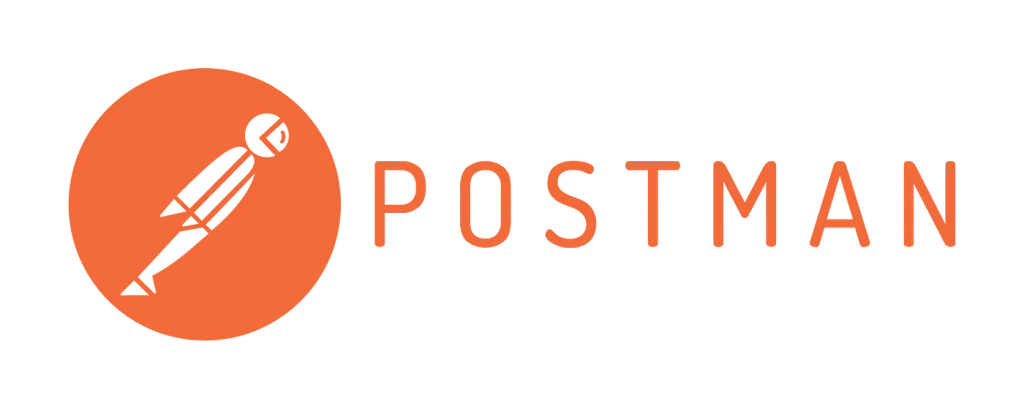
Meet the API powerhouse that’s changing how developers build software. Postman, born from Indian innovation, now commands a $5.6 billion valuation after securing ₹18,985.60 million in Series D funding.
Global Customer Base and Enterprise Adoption
The numbers speak volumes – 98% of Fortune 500 companies trust Postman for their API needs. Money talks? You bet. Forrester Consulting found companies pocket ₹370.43 for every ₹84.38 spent on Postman, totaling ₹689.39 million in value over three years. No wonder G2 crowned it the leading API platform.
Picture this: 500,000 organizations worldwide generating estimated yearly revenue between ₹10,125.65-150 million. The secret sauce? A full-lifecycle approach that pushes quality API development left in the pipeline.
Developer Community Growth
Postman’s developer army keeps growing stronger. From 25 million users in early 2023 to 35 million developers today. The platform reaches developers in 266 countries – yes, even Antarctica, where devs created 10 collections last year. Two-thirds of API pros say their APIs bring home the bacon.
Product Innovation Roadmap
What’s cooking in Postman’s kitchen? Fresh features keep rolling out – collaborative workspaces, beefed-up security, automated testing, mock servers. The Orbit acquisition in 2024? That’s Postman gunning for their 100-million-developer dream.
AI’s not just buzzword here – it’s reality. 2024 brought smart features for test generation, documentation, debugging, and data visualization. API traffic related to AI? Jumped 73% last year. Looks like Postman’s writing tomorrow’s API story today.
Icertis: The $5 Billion Contract Management Leader

Smart contracts need smart solutions. Icertis delivers exactly that, earning its $5 billion valuation among India’s elite unicorns. This Bellevue-based powerhouse, with deep Indian roots, has reinvented contract management through its groundbreaking Icertis Contract Intelligence (ICI) platform.
Enterprise Client Portfolio
The big names trust Icertis – 30% of Fortune 100 companies run on their solutions. Mercedes-Benz picked Icertis to steer through automotive industry changes. Microsoft? They transformed their global contracts using Icertis’ Azure-powered smarts. Add giants like Accenture, Hewlett Packard Enterprise, and Johnson & Johnson to the mix. Together, these clients manage 10 million contracts worth over INR 84.38 trillion on the platform.
AI in Contract Lifecycle Management
Here’s where Icertis leads the pack. Their 2023 launch of generative AI “Copilots” marked an industry first, becoming their fastest-growing product line ever. Picture this: contract analysis across 40+ languages in 90+ countries, with AI catching insights, spotting risks, and checking compliance. No wonder they grabbed the 2025 Artificial Intelligence Excellence Award – third time running.
Global Market Expansion
The growth story keeps getting better. Since 2017, European customer numbers quadrupled. New offices sprouted in London, Paris, and Sofia, while European staff numbers tripled. Today’s score? Operations in 90+ countries, positive cash flow, and annual recurring revenue topping INR 21095.11 million in 2024. Fresh fuel came from B Capital – INR 4219.02 million worth. Next stop? A global CLM market worth INR 291.96 billion by 2034.
Pine Labs: The $5 Billion Merchant Commerce Platform
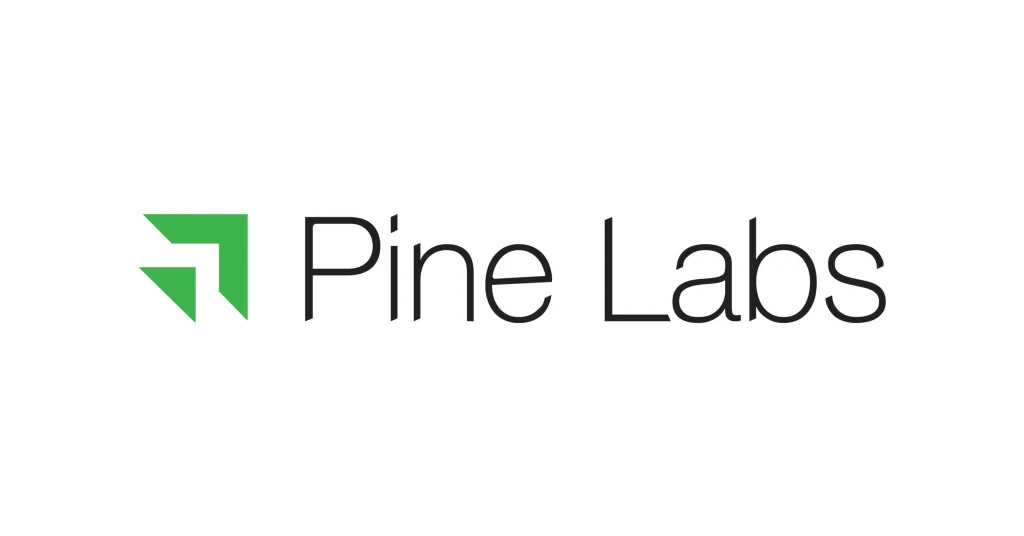
Pine Labs stands tall as Asia’s retail payment champion, commanding a $5 billion valuation. This powerhouse serves 500,000+ merchants across India, the Middle East, and Southeast Asia, with an IPO coming in late 2025.
Point-of-Sale Innovation
The magic happens at checkout. Pine Labs’ Android-powered PoS terminals do more than just process payments – they’re retail command centers accepting 100+ payment modes. These smart terminals pack some serious features:
- Track inventory and speed up checkout in real-time
- Play nice with your favorite billing apps
- Grab customer feedback on the spot
- Handle settlements while you sleep
Nobody did cloud-based unified PoS quite like this before. Pine Labs showed everyone how to cut costs while pumping up those retail numbers.
BNPL and Credit Solutions
2024 brought something fresh – Credit+. This new platform lets banks, fintechs, and big merchants run their own credit shows. Think credit programs, co-branded cards, rewards – the works.
Here’s the clever bit: Pine Labs makes EMIs work on both credit and debit cards. Their Plutus Smart device helps merchants cook up instant EMI offers, turning window shoppers into buyers.
Southeast Asia Expansion Strategy
Pine Labs plays the expansion game like a pro. Grabbing Fave in 2021? That was their ticket to challenge UPI players across Southeast Asia.
Team up with Mastercard in 2022? Smart move. Buy Now Pay Later rolled out across Singapore, Indonesia, and Hong Kong. Plus, their Qwikcilver tech caught the eye of big names like Lazada, CapitaLand, and Frasers Group. Looks like Pine Labs knows exactly where it’s heading.
Zepto: The Quick Commerce Unicorn Valued at $5 Billion
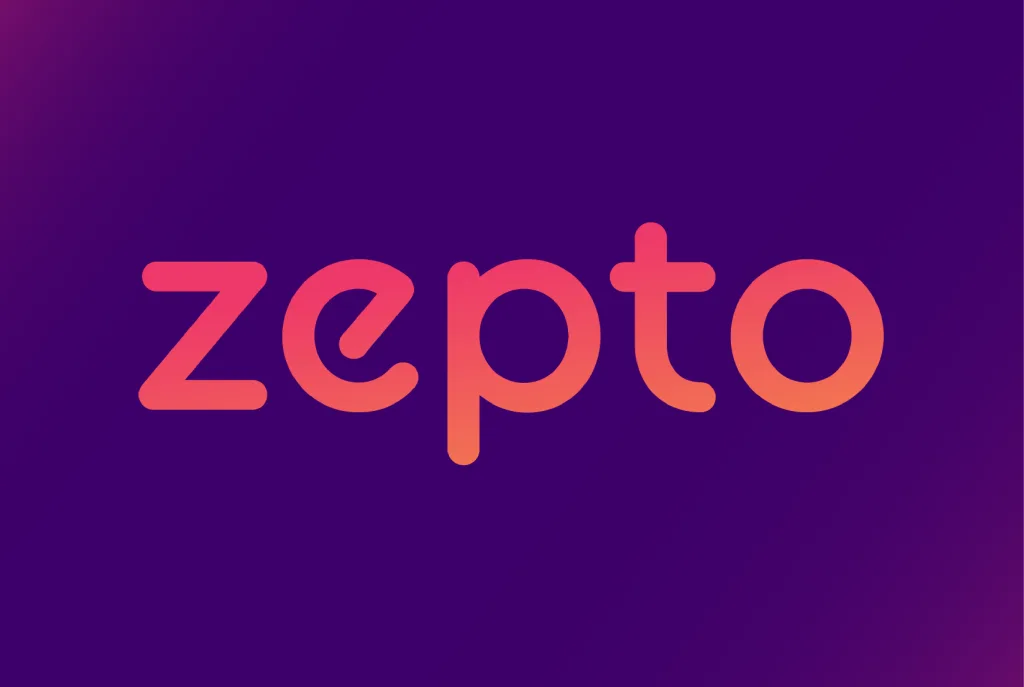
Speed sells – just ask Zepto. This quick commerce sensation rocketed to a $5 billion (INR 421.90 billion) valuation by promising 10-minute deliveries since 2021. While other startups watched from the sidelines, Zepto grabbed 2024’s only unicorn crown.
Dark Store Network and Logistics
The secret behind those lightning-fast deliveries? Smart geography. Zepto’s dark stores sit within 2-3 km of customers, with 350 locations set to double to 700 by March 2025. These mini-warehouses run like clockwork – 58 seconds from pick to pack, delivering goodies in just 8 minutes and 47 seconds.
Smart tech keeps the shelves stocked with what customers want. Plus, Zepto’s getting clever with delivery costs, eyeing partnerships with fleet operators like Ola.
Unit Economics and Path to Profitability
Money talks – Zepto’s listening. FY24 brought INR 84.38 billion in GMV, while 75% of stores turned EBITDA positive by May 2024. Running these dark stores? Just 5-10% of revenue covers everything from rent to wages.
CEO Aadit Palicha drops some truth: “Stores now hit profit in eight months instead of 23”. Next up? Fine-tuning those commission rates as Zepto eyes an IPO in late 2025 or early 2026.
Category Expansion Beyond Groceries
Groceries? That’s just the beginning. Zepto now stocks makeup and over-the-counter meds. The real surprise? Zepto Cafe. With 148 items on the menu, this coffee venture brews INR 160 crore yearly from just 15% of stores.
Behind the scenes, their Thor tool keeps this product jungle organized. Looks like Zepto’s cooking up more than just quick deliveries.
Dailyhunt and Josh: The $5 Billion Digital Content Unicorn

VerSe Innovation just scored big. The parent company behind Dailyhunt and Josh grabbed a $5 billion valuation after pulling in INR 67926.26 million from heavyweight investors like Canada Pension Plan Investment Board and Ontario Teachers’ Pension Plan Board. These two platforms aren’t just changing how Indians consume content – they’re rewriting the rules.
Vernacular Content Strategy
Here’s what makes VerSe different: They bet big on India’s language diversity. Dailyhunt speaks 15 different languages through 100,000+ content creators. The numbers back this play – 73% of Indian internet users prefer local languages, creating a massive INR 4472.16 billion market.
Want reach? Dailyhunt pulls in 350 million monthly users. That’s because VerSe tapped into something powerful – India’s 540 million regional language users. Talk about knowing your audience!
AI-Powered Content Recommendation
Smart tech drives the show at VerSe. Their AI doesn’t just recommend content – it learns what makes each user tick. Dailyhunt serves up local stories while Josh keeps the videos rolling, all powered by their home-grown AI platform.
The magic happens behind the scenes. Every tap, every scroll teaches the AI more about user preferences. Living in Kerala? Get ready for Malayalam content that feels just right.
Monetization Models
Money moves? VerSe has plenty. Beyond ads, they’re building an empire with NexVerse.ai for AdTech smarts, Dailyhunt Premium for subscribers, and VerSe Collab for influencer magic.
The shopping spree brought Magzter for digital subscriptions and Valueleaf Group to boost their ad game. Josh jumped into monetization in April 2022, eyeing profits within 24-36 months. The strategy’s working – EBITDA burn dropped 51% to Rs 710 crore in FY24, with 75% revenue growth expected in FY25.
Swiggy: The $5.5 Billion Food Delivery and Quick Commerce Giant
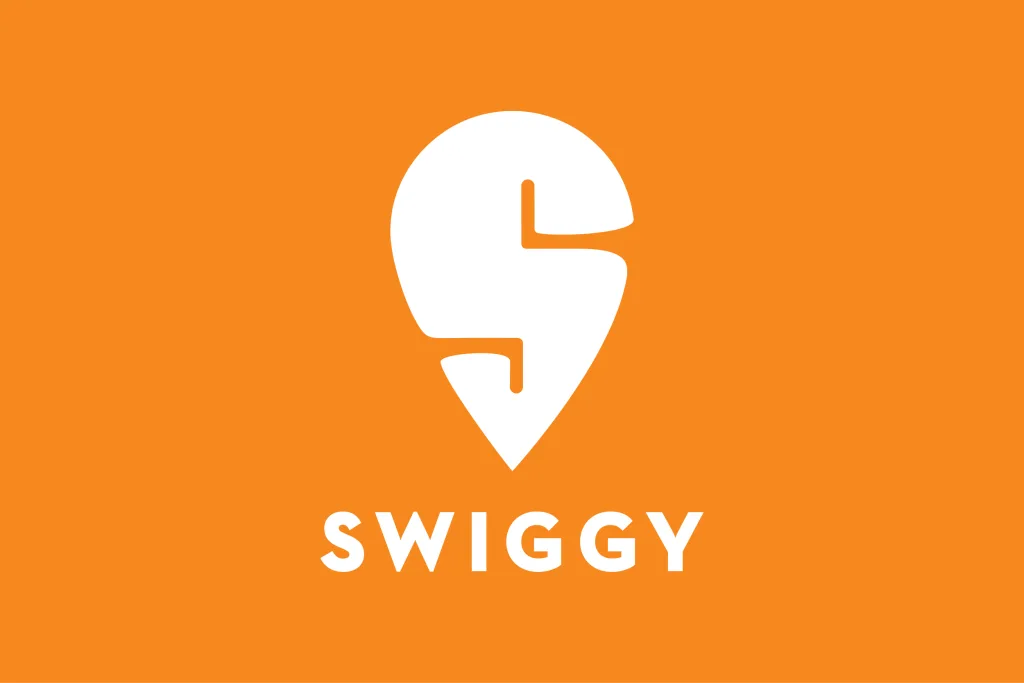
Swiggy’s cooking up something special. The $5.5 billion food delivery powerhouse keeps serving up growth, with Q3 FY25 platform orders jumping 38% to INR 12,165 crore. But food delivery? That’s just the appetizer.
Beyond Food Delivery Strategy
Here’s how Swiggy’s expanding its menu:
- Quick Commerce: Instamart leads the charge as their fastest-growing venture
- 10-Minute Delivery: The new Bolt service already plates up 9% of all food deliveries
- Premium Subscriptions: One BLCK members enjoy perks like on-time promises and VIP support
Want something completely different? Meet Yello – Swiggy’s marketplace connecting you with everyone from therapists to astrologers. Plus, they’re jumping into sports with a new subsidiary for team ownership and events.
Instamart Growth Metrics
Instamart’s numbers tell a tasty story – GOV soared 88.1% year-on-year. Q3 FY25 saw 96 new dark stores pop up, doubling last quarter’s expansion. Now serving 84 cities with 9 million monthly hungry customers.
Sure, margins got squeezed (dropping from -1.9% to -4.6% quarter-on-quarter), but Swiggy’s playing the long game in this high-stakes quick commerce battle.
Restaurant Partner Economics
Restaurant owners, here’s your slice of the pie. While Swiggy takes a 20-30% cut, they’re serving up something valuable in return:
Instant access to hungry customers? Check. Marketing muscle that would cost a fortune solo? You bet. Plus, the onboarding’s quick – just 24 hours with basic papers like your FSSAI license and menu.
The cherry on top? Real customer feedback that helps restaurants cook up better service. Now that’s a recipe for success.
OYO: The $3.8 Billion Global Hospitality Platform
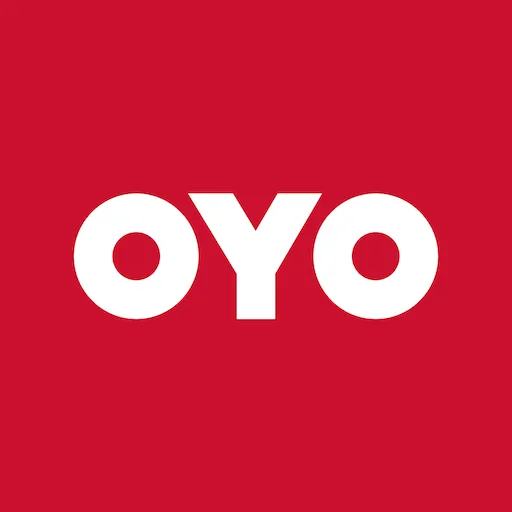
OYO’s story keeps getting better. The budget hotel pioneer turned $3.8 billion global hospitality giant just posted its first profit – Rs 229 crore in FY24. Remember last year’s Rs 1,286 crore loss? That’s what you call a comeback.
Asset-Light Business Model
Smart moves make smart money. OYO skipped hotel ownership for something better – a pure franchising model bringing in 90% of earnings. The playbook? Partner with unbranded properties, add tech magic, watch revenues climb. Hotel owners get what OYO calls a “double bottom line”, while OYO keeps things light and lean.
The numbers work for everyone. OYO takes 20-30% of bookings, with 99.9% of properties running free from minimum guarantees. Result? A massive network of 157,000 storefronts across 35+ countries.
Technology Platform for Hotel Partners
Behind OYO’s success sits a tech powerhouse – 40+ integrated products doing the heavy lifting. Since introducing smart pricing in 2016, they’ve never stopped innovating. The 2018 launch of OYO OS changed how partners manage properties.
Want to list your hotel? OYO 360 gets you live in 30 minutes flat. Their AI pricing wizard reads the market and sets rates that sell. The real game-changer? A ChatGPT-powered virtual front desk cutting costs by 60%, saving hotels Rs 2.53 million yearly.
International Market Performance
OYO’s global game is strong – 70% of revenue comes from overseas. US numbers? Room revenue jumped 17% in 2023, beating industry trends. Plus, grabbing G6 Hospitality added a sweet Rs 275 crore to quarterly earnings.
The luxury play’s heating up too. OYO teamed with SoftBank for ‘SUNDAY’ hotels, snagged Paris-based Checkmyguest for Rs 2,362 million, and eyes a March 2025 IPO. Looks like this hospitality unicorn’s just warming up.
Ola Electric: The $5.4 Billion EV Manufacturing Unicorn

Meet India’s electric vehicle champion. Ola Electric roars into the future with a $5.4 billion valuation, powering India’s switch to clean mobility one scooter at a time.
Gigafactory Scale and Capacity
The future of EV manufacturing takes shape in Tamil Nadu. Ola’s massive Gigafactory broke ground in June 2023, sprawling across 115 acres. The numbers? Starting at 1 GWh production for their game-changing 4680 cells, scaling up to a mighty 20 GWh.
Phase 1 fires up in FY 2025, ramping to 5 GWh by October 2024, then 6.4 GWh come April 2025. The coolest part? An all-women workforce runs the show, just like at their Future Factory.
Product Portfolio and Pricing Strategy
Ready to ride electric? Ola’s got wheels for every wallet. The Gig scooter zips in at ₹39,999, covering 112km per charge. Want premium? The Roadster Pro awaits at ₹1,99,999.
The full lineup hits every sweet spot: Gig+ (₹49,999), Roadster X (₹84,999), Roadster (₹1,04,999), and Roadster X+ (₹1,14,999). The strategy’s working – Ola Electric leads India’s e-scooter market, moving 330,000 units in FY24 for a 35% share.
Battery Technology and Innovation
Inside Ola’s Battery Innovation Center, tomorrow’s power cells take shape. Their latest breakthrough? The “Bharat” cell – a homegrown 4680 powerhouse with 70+ patents. These babies pack five times more punch (275 Wh/kg) than current 2170 cells.
The specs impress: works from 10-70°C, lasts 1,000+ charges, and hits 50% juice in 13 minutes flat. Next up? Solid-state batteries before 2030.
Charging Infrastructure Development
Here’s the charging challenge: India’s got one public charger per 135 EVs, while globally it’s one per 6-20 EVs. The target? 3.9 million charging points by 2030 for 50 million expected EVs.
Progress looks good – public chargers doubled from 6,586 to 12,146 between March 2023 and February 2024. While Ola masters manufacturing and battery tech, cracking the charging puzzle remains key to India’s electric dreams.
Comparison Table: India’s Unicorn Power Rankings
Want to see how India’s biggest startups stack up? Here’s your quick guide to the titans reshaping India’s digital landscape.
| Company | Valuation | Industry Focus | Key Products/Services | Notable Metrics | Revenue/Financial Info |
|---|---|---|---|---|---|
| Flipkart | $37.6B | E-commerce | Online retail, payments, advertising | 48% e-commerce market share; 60% online fashion market share | Not mentioned |
| PhonePe | $12B | Fintech | Digital payments, insurance, lending | 47.67% UPI market share; 810.2 crore transactions (Jan 2025) | ₹5,064 crore (FY23-24) |
| Polygon | $10B | Blockchain | Ethereum scaling solutions, zkEVM | 53,000+ dApps; 2B+ transactions | Not mentioned |
| Dream11 | $8B | Gaming | Fantasy sports platform | 100M+ registered users; 90% market share | Not mentioned |
| RazorPay | $7.5B | Fintech | Payment gateway, neo-banking, lending | ₹5062.83B annualized TPV; 700,000+ SMBs onboarded | 30% revenue from neo-banking |
| Ola Cabs | $7.3B | Mobility | Ride-hailing, financial services | High 30s% market share | Not mentioned |
| CRED | $6.4B | Fintech | Credit card payments, e-commerce | 1.2 crore monthly transacting users | ₹2,473 crore (FY24) |
| Postman | $5.6B | Software | API development platform | 35M developers; 500,000 organizations | ₹10,125-150M ARR |
| Swiggy | $5.5B | Food Delivery | Food delivery, Instamart, quick commerce | ₹12,165 crore Q3 FY25 GOV; 9M monthly Instamart users | Not mentioned |
| Ola Electric | $5.4B | EV Manufacturing | Electric vehicles, battery tech | 35% market share; 330,000 units sold in FY24 | Not mentioned |
| Icertis | $5B | Software | Contract management solutions | 10M+ contracts worth ₹84.38T | ₹21,095.11M ARR |
| Pine Labs | $5B | Fintech | PoS solutions, BNPL | 500,000+ merchants; 100+ payment modes | Not mentioned |
| Zepto | $5B | Quick Commerce | Grocery delivery, cafe services | 350 dark stores; 8.47 min avg delivery time | ₹84.38B GMV (FY24) |
| Dailyhunt/Josh | $5B | Digital Content | News aggregation, short video | 350M+ monthly users; 15 languages | Not mentioned |
| OYO | $3.8B | Hospitality | Hotel aggregation, property management | 157,000+ storefronts; 35+ countries | ₹229 crore profit (FY24) |
From e-commerce giant Flipkart’s mighty $37.6B valuation to OYO’s impressive turnaround story at $3.8B, these 15 companies showcase India’s startup muscle. Notice how fintech dominates with five players, while new-age sectors like quick commerce and EV manufacturing make their mark.
The numbers tell fascinating stories – PhonePe processing 810.2 crore transactions, Dream11 entertaining 100M+ users, and Zepto delivering groceries in just 8.47 minutes. Each metric points to scale, innovation, and market leadership.
Conclusion
Ready to see what makes India’s startup story special? These 15 unicorns, worth between $37.6 billion and $3.8 billion, paint a picture of pure innovation. From Flipkart’s e-commerce empire to Polygon’s blockchain breakthroughs, each success story adds a new chapter to India’s tech saga.
Here’s what makes these giants tick. They’re not just building businesses – they’re solving real Indian problems with solutions that work worldwide. Smart tech? You bet. Every unicorn packs serious AI muscle and cutting-edge innovation. But here’s the clever part – they’re growing fast while keeping their books healthy.
Want proof India’s startup scene has grown up? Look at PhonePe turning payments into profits, RazorPay reinventing business banking, and CRED making credit cards cool. Meanwhile, Ola Electric and Polygon show India’s not just following tech trends – we’re setting them.
The road ahead looks exciting. These unicorns aren’t just expanding – they’re eyeing stock markets, exploring new territories, and showing the world what Indian innovation means. For every startup dreaming big, these success stories light the way. No wonder India’s startup ecosystem grows faster than anywhere else on the planet.
Read more: Top 5 Indian cricketers who own private jets – All the details you need to know!
FAQs
How many unicorn companies does India have in 2025?
India has emerged as a significant hub for unicorn startups, with over 100 companies reaching valuations exceeding $1 billion. The country ranks as the third-largest unicorn hub globally, trailing only the United States and China. Some projections suggest India could have over 250 unicorns by 2030.
Which company became India’s 100th unicorn?
OPEN, a neobanking fintech startup, became India’s 100th unicorn. Founded in 2017, OPEN offers business banking, payments, and expense management services to small and midsize businesses across the country.
How quickly did Zepto achieve unicorn status?
Zepto achieved unicorn status at an impressive pace. Within months of launching, the company raised significant funding rounds, reaching a $1.4 billion valuation by mid-2023. This rapid growth made Zepto India’s 111th unicorn, even as many startups were struggling due to a funding winter.
What is the projected growth for Indian startups by 2030?
According to a report by executive search firm Longhouse, the number of startups in India is expected to double to 2.4 lakh by 2030. This surge could boost the number of unicorns to 280 from 120 now and generate 50 million jobs. Artificial intelligence is anticipated to drive transformation across various sectors.
Which sectors dominate India’s unicorn landscape?
India’s unicorn landscape is diverse, with strong representation across multiple sectors. E-commerce, fintech, and technology services are particularly prominent. Companies like Flipkart lead in e-commerce, while PhonePe, Razorpay, and CRED showcase fintech leadership. Other notable sectors include mobility (Ola), food delivery (Swiggy), and emerging technologies like blockchain (Polygon) and electric vehicles (Ola Electric).








![Top 10 Most Expensive Watch in the World [Celebrity Collections 2025]](https://technosports.co.in/wp-content/uploads/2025/02/Most-Expensive-Watches-in-the-World-75x75.webp)